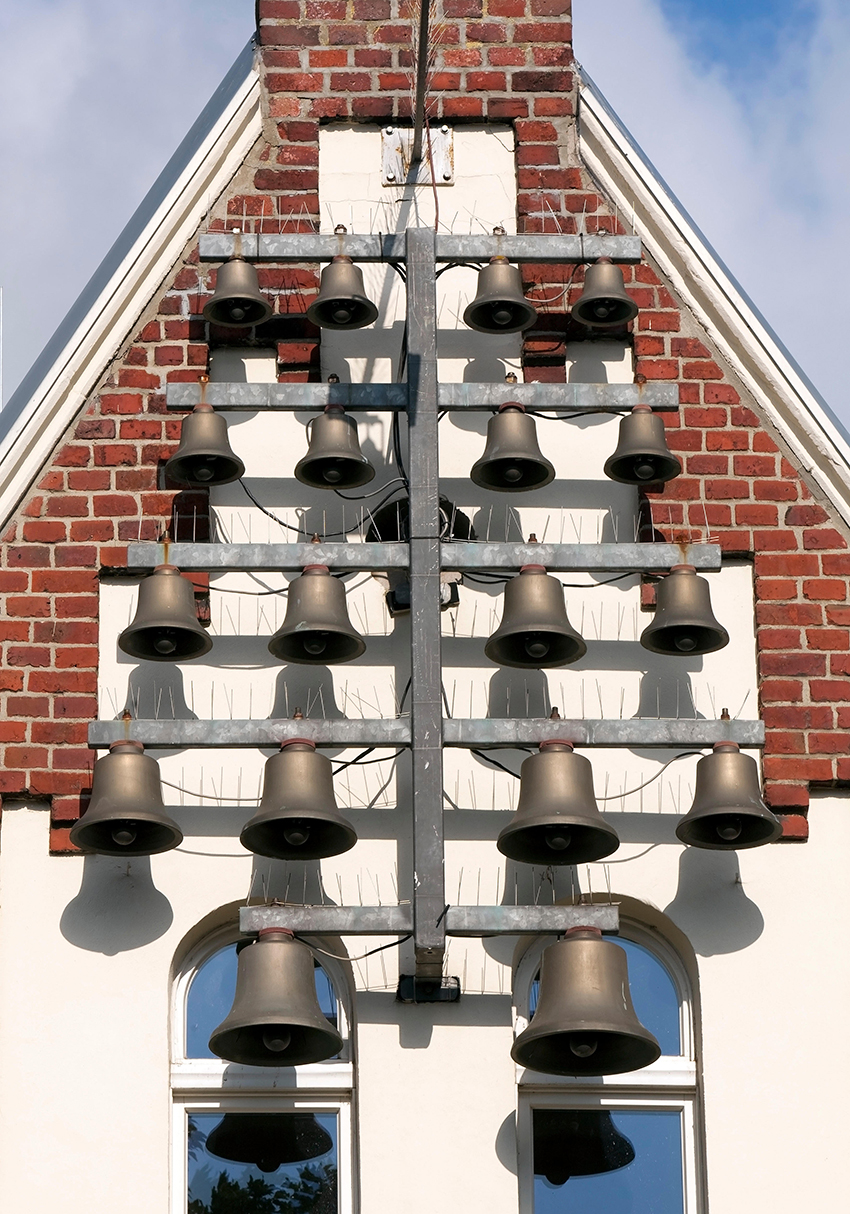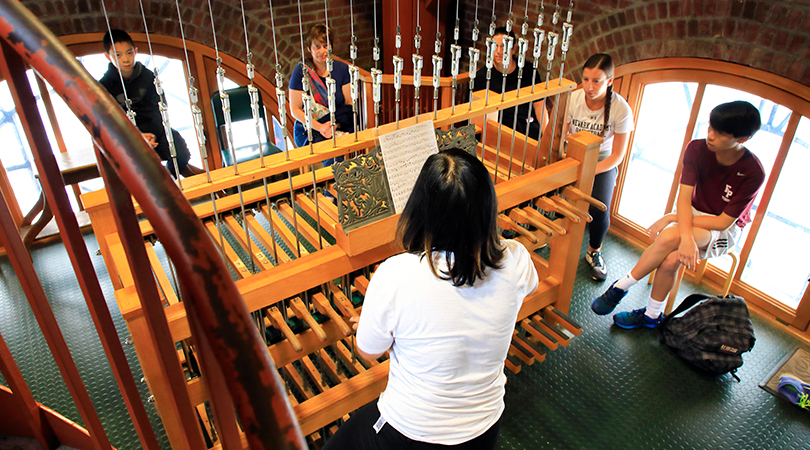A chime is a musical instrument comprising 8 to 22 tower bells. Like the larger carillon, a manually-played chime is sounded with a baton keyboard, sending familiar tunes and melodies wafting across the rooftops. Chimes may be found in a variety of shapes and sizes, with some harmonically tuned and others merely approximating a musical scale. Gracing municipal and religious structures across the world, chimes give voice to a community and bring both secular and sacred music to everyday life.

Image: An 18-bell electric-automatic chime graces the exterior of the Westphalian Bell Museum in Gescher, Münsterland, North Rhine-Westphalia, Germany.
What time is it?
The additional function of automatic instrumentation allows the chime to play more frequently and to play a given repertoire at set times, like on the hour or quarter-hour. In fact, the word ‘clock’ is derived from the Latin word cloca, which means bell. Because the resonant toll of a bell could be heard across great distances, chimes became a fairly common means of communication in village life when private clocks were still considered a luxury. Today, chimes maintain their place in the neighborhood and are themselves a coveted addition to a community.
Cover image: View from below of the 13-bell chime at the Cathedral Basilica of the National Shrine of Our Lady Aparecida in Aparecida, Brazil.





